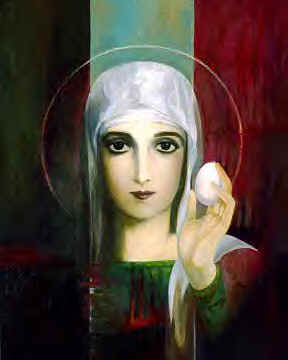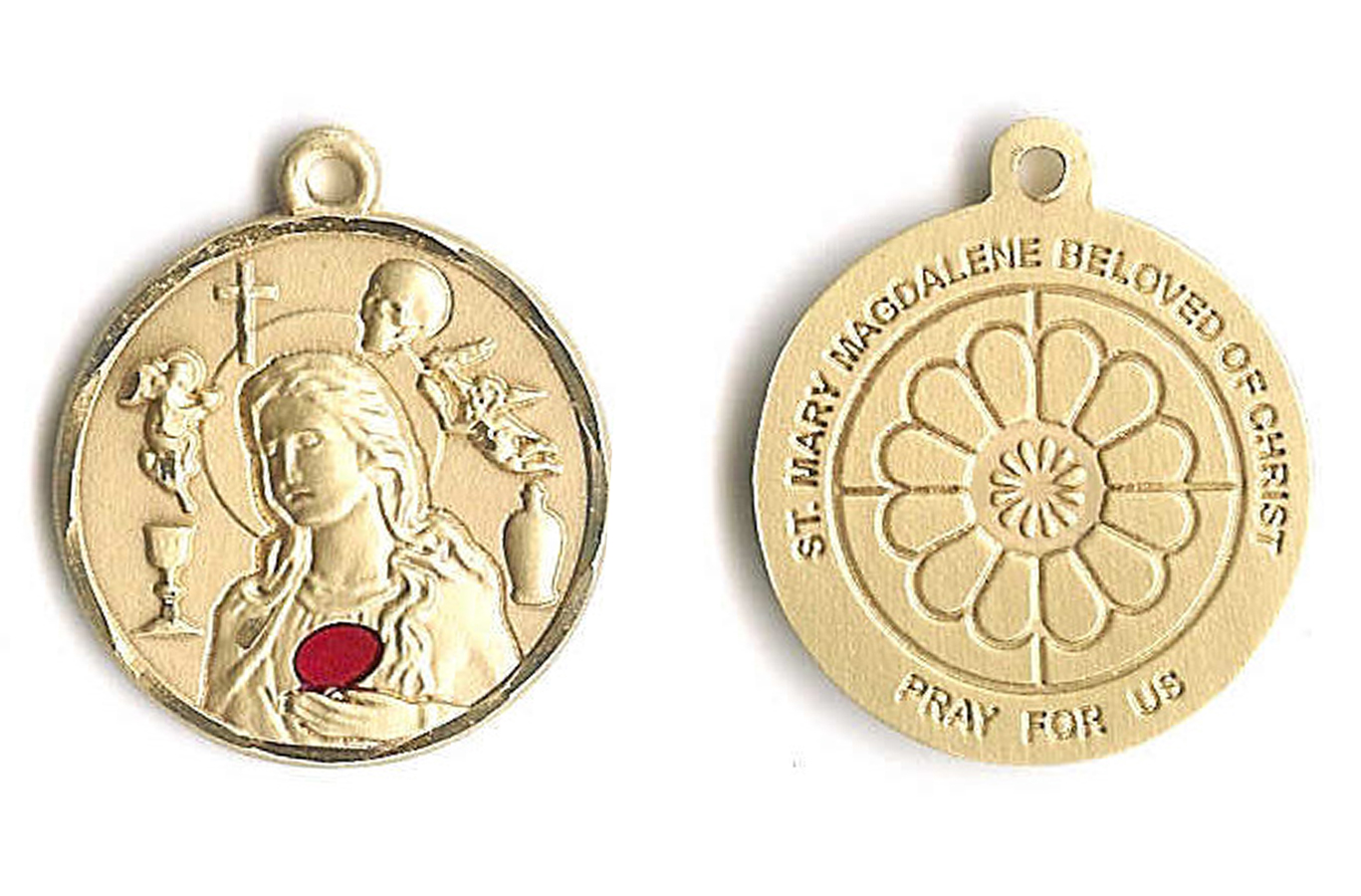|
|
More Red Egg Lore
Below is an excerpt from a wonderful website I found called The Nazarene Way. It comes from their section on Mary Magdalene. The picture above on the left side is likewise from the same site. The rest of their entry is well worth the time if you have it: http://www.thenazareneway.com/mary_magdalene.htm
Tradition relates, that in Italy Mary Magdalene visited the Emperor Tiberias (14-37 AD) and proclaimed to him about Christ's Resurrection. According to tradition, she took him an egg as a symbol of the Resurrection, a symbol of new life with the words: "Christ is Risen!" Then she told Tiberias that, in his Province of Judea, Jesus the Nazarene, a holy man, a maker of miracles, powerful before God and all mankind, was executed on the instigation of the Jewish High-Priests and the sentence affirmed by the procurator Pontius Pilate. Tiberias responded that no one could rise from the dead, anymore than the egg she held could turn red. Miraculously, the egg immediately began to turn red as testimony to her words. Then, and by her urging, Tiberias had Pilate removed from Jerusalem to Gaul, where he later suffered a horrible sickness and an agonizing death.
From this, the miracle of Mary Magdalene, the custom to give each other paschal eggs on the day of the Luminous Resurrection of Christ spread among Christians over all the world. On one ancient hand-written Greek ustav, written on parchment, kept in the monastery library of Saint Athanasias near Thessalonika (Solunea), is an established prayer read on the day of Holy Pascha (Easter) for the blessing of eggs and cheese, in which it is indicated, that the Hegumen (Abbot) in passing out the blessed eggs says to the brethren: "Thus have we received from the holy fathers, who preserved this custom from the very time of the holy apostles, wherefore the holy equal-unto-the-apostles Mary Magdalene first showed believers the example of this joyful offering."
This remarkably similar passage comes from the website of the Greek Orthodox Archdiocese of Australia:
Tradition relates, that in Italy Mary Magdalene visited the Emperor Tiberias (14-37 AD) and proclaimed to him about Christ's Resurrection. According to tradition, she took him a red egg as a symbol of the Resurrection, a symbol of new life with the words: "Christ is Risen!" Then she told the emperor about this, that in his Province of Judea was the innocently condemned Jesus the Galilean, an holy man, a maker or miracles, powerful before God and all mankind, executed on the instigation of the Jewish High-Priests and the sentence affirmed by the procurator named by Tiberias, Pontius Pilate.
Mary repeated the words of the Apostles, that believing in the Redemption of Christ from the vanity of life is not as with perishable silver or gold, but rather the precious Blood of Christ is like a spotless and pure Lamb.
Thanks to Mary Magdalene the custom to give each other paschal eggs on the day of the Luminous Resurrection of Christ spread among Christians over all the world. On one ancient hand-written Greek ustav, written on parchment, kept in the monastery library of Saint Athanasias near Thessalonika (Solunea), is an established prayer read on the day of Holy Pascha for the blessing of eggs and cheese, in which it is indicated, that the Hegumen (Abbot) in passing out the blessed eggs says to the brethren: "Thus have we received from the holy fathers, who preserved this custom from the very time of the holy apostles, wherefore the holy equal-unto-the-apostles Mary Magdalene first showed believers the example of this joyful offering".
Hard to know exactly where the attribution should go here, but maybe there's yet a third source that they both referenced. Reminds me of how the Epistle of St. Jude bears a striking resemblance to II Peter. Wikipedia has the following information about Mary Magdalene and the Easter Egg traditions.
For centuries, it has been the custom of many Christians to share dyed and painted eggs, particularly on Easter Sunday. The eggs represent new life, and Christ bursting forth from the tomb. Among Eastern Orthodox this sharing is accompanied by the proclamation "Christ is risen!".
One tradition concerning Mary Magdalene says that following the death and resurrection of Jesus, she used her position to gain an invitation to a banquet given by Emperor Tiberius Caesar. When she met him, she held a plain egg in her hand and exclaimed "Christ is risen!" Caesar laughed, and said that Christ rising from the dead was as likely as the egg in her hand turning red while she held it. Before he finished speaking, the egg in her hand turned a bright red, and she continued proclaiming the Gospel to the entire imperial house.
There is also a supposed tradition that the remnants of Christ's heart remain inside an egg-like vessel, and that this vessel is the basis for "the Sacred Heart" motif in Catholicism. In some legends the Sacred Heart exists as a guarded sacred object or a metaphysical essence, passed from hand to hand, with Mary Magdalene being listed among noteworthy caretakers.

